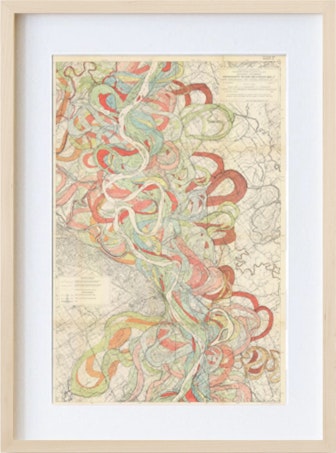
First Paper to Link CO2 and Global Warming, by Eunice Foote (1856)
In a series of experiments conducted in 1856, Eunice Newton Foote — a scientist and women's rights campaigner from Seneca Falls, New York — became the first person to discover that altering the proportion of carbon dioxide (then called "carbonic acid gas") in the atmosphere would change its temperature. This relationship between carbon dioxide and the earth's climate has since become one of the key principles of modern meteorology, the greenhouse effect, and climate science. However, no one acknowledged Foote was the first to make this discovery for more than a century, in large part because she was a woman.
Entirely because she was a woman, Foote was barred from reading the paper describing her findings at the 1856 meeting of the American Association for the Advancement of Science held in Albany, New York. Instead, Professor Joseph Henry of the Smithsonian had the honor of introducing her, announcing that science was “of no country and of no sex. The sphere of woman embraces not only the beautiful and the useful, but the true.” Perhaps this was Henry’s attempt to shield Foote and her findings from sexist criticism or, worse, indifference. Unfortunately, “indifference” would be the best word to describe how her findings were received.
Not only was Foote not permitted to read her groundbreaking paper, she was passed over for publication in the Association’s annual Proceedings. “Circumstances Affecting the Heat of Sun’s Rays” was published in its entirety in The American Journal of Science (September 1856) — but even then it went unremarked.
The Irish physicist John Tyndall, who is still usually credited with founding climate science, three years later made a very similar though more detailed investigation into the effect of gases (and carbon dioxide in particular) on trapping the sun's heat, but he failed to cite Foote’s work. According to Roland Jackson, this was probably because he hadn’t read it. “Direct communication about science across the Atlantic was sparse in the 1850s,” Jackson writes, “and, as American scientific institutions carried relatively little weight in Europe, personal relationships were particularly important”.
It was unlikely that an amateur American woman scientist living in the environs of Albany during the mid-nineteenth century would have connections overseas. Indeed, Foote’s education was eccentric even for her era. In the words of John Perlin, who’s been campaigning for years now to reinstate Foote in the history of climate science:
While in her teens, Foote attended Troy Female Seminary, whose students were invited to attend science lectures at a school that later became Rensselaer Technological University. An ex-con named Amos Eaton, who had been sentenced to life in prison for fraud but was released after four years so he could pursue his life calling as an evangelist of scientific education, had started the university.
Eaton believed that men and women should have equal access to education in the sciences; definitely a wild idea back in the early nineteenth century. To fulfill his goal, he mentored a teacher at the Female Seminary, who established the first all- encompassing science curriculum for women, one that was equal to or better than any offered to men. Eaton also oversaw the construction of chemistry labs at both schools, the first in the world built solely for students. It was here where Eunice developed her experimental scientific skills.
Foote’s seminal experiment was ingeniously homemade. Using four thermometers, two glass cylinders, and an air pump, she isolated the component gases that make up the atmosphere and exposed them to the sun’s rays, both in sunlight and in shade. Measuring the change in their temperatures, she discovered that carbon dioxide and water vapor absorbed enough heat that this absorption could affect climate:
An atmosphere of [carbon dioxide] would give to our earth a high temperature; and if as some suppose, at one period of its history the air had mixed with it a larger proportion than at present, an increased temperature…must have necessarily resulted.
Oct 3, 2019






